Types and colours of Barnevelders
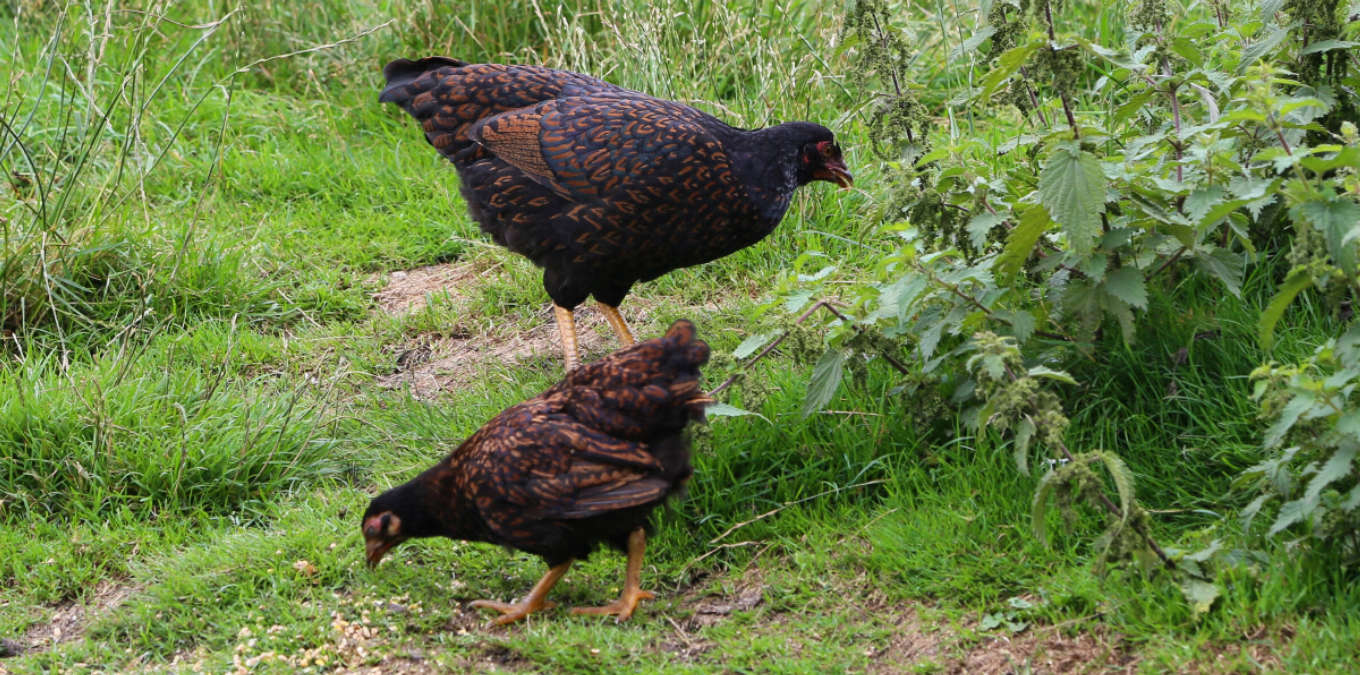
What types and colours of Barnevelder are there?
Essentially Barnevelders chickens are classified into two sizes, the large fowl and the bantam and into patterened, like the double laced, or solid colours, like the black.
For the most part all of the colours that the bigger bigs are found in also apply to the bantam variety.
The large fowl:
Barnevelder large fowl are a big well filled bird with pleasing curves.
The weight of the cock bird should be between 3.2 and 3.6Kg and the hen or dam between 2.7 and 3.2Kg.
The Bantam:
The bantam is the smaller size and in the case of Barnevelders is roughly one third of the weight of the large fowl.
A Bantam cock's ideal weight is 920g and the hen should be around 750g.
The first record of the bantam was from the Utrecht show in 1921 when Mr Van Dyk won the class. German strain appeared in 1922 by crossing undersized Barnevelders with other bantams and were exhibited from 1927 to the 1930’s.
Types of Barnevelder:
There are a great many types of Barnevelder , a lot of them are in the hands of dedicated breeders and not really readily obtainable .
Often the rarer types are poor examples of the breed. The breed was developed in the 1850's by crossing the local fowl with imported breeds from the east.
The Barnevelder breed was standardised in 1921. The original and most widely available is the double laced variety. Several other varieties have been produced since by cross breeding, including a bantam double laced (1931).
Most of the dates may not be particularly accurate, unless official ratification dates by poultry standards. Also If you are looking at re-creating any of the breeds you will need to quite a lot of your own research as the birds used in the production of others are heresay reporting or in some cases guesswork.
This is how I re-created the Silver Double Laced Large fowl Barnevelder.
Double-laced (large fowl)
Bred in Barneveld, Netherlands in the late 19th / early 20th century. This is the most widely known type.
I have 22 hens in 4 breeding groups. I adore keeping these birds, they are so happy and docile wandering around my fields.They are not the most prolific layers, or have the biggest eggs, but the quality of the eggs is really high, mine lay an average of 183 in their first year.
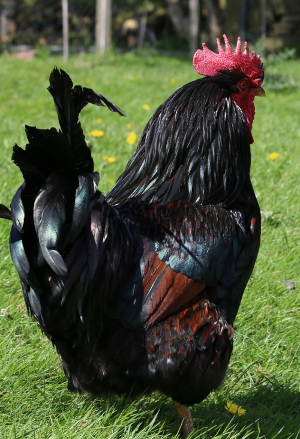
Barnevelders come in a considerable number of variations in both the bantam and large fowl. The standard gold double laced or the Chestnut Barnevelder as it is now known in the UK seems to be the most common kept here.
Barnevelder forage well and are very easy to tame and as such make excellent pets as well as eggs producers. Their wings are quite high on their body and they do not fly particularly well. They like there own company and rarely if ever squabble, mine even share nests and brooding without any fuss.
The deep speckled chestnut brown eggs are a rarity these days. This picture below is a selection from my birds:
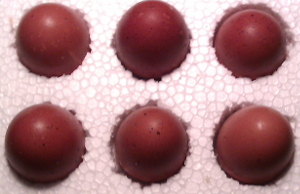
Barnevelder chicks - are incredibly cute and easy to look after.
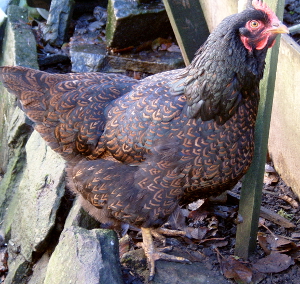
For more on the large fowl Barnevelder.
Double-laced (Bantam)
Recognised in 1931 in Germany. Bred from a 'petite' double-laced hen and a Bantam Rhode Island Red cock, followed by crossings with Bantam Golden-laced Wyandottes, Bantam German Langshan, and Bantam Indian Game (Cornish).
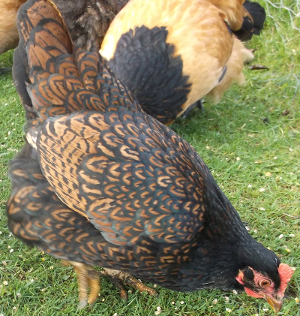
The first record of the bantam was from the Utrecht show in 1921 when Mr Van Dyk won the class. German strain appeared in 1922 by crossing undersized Barnevelders with other bantams and were exhibited from 1927 to the 1930’s.
It is unlikely that pre-war bantams either laid brown or survived the Second World War but when peace returned breeding continued with the production of black and white bantam Barnevelders between 1954 and 1960 by crossing with Wyandotte’s and then breeding to remove the rose comb.
Mrs Mainwaring is credited with the production of the English bantams during the 1920’s and won several prises with them at shows in the north of England in 1928. I have never seen a bantam Barnevelder that lays a dark egg, the best mine produce is a speckled cream tinted one.
Dedicated bantam Barnevelder page.
Double-laced Blue (large fowl)
Blue laced – the blue double laced is very attractive and has blue lacing over a red brown colour and was developed by Dutch and German fanciers. There genetics of the blue is complicated and it is difficult to produce evenly colours birds.
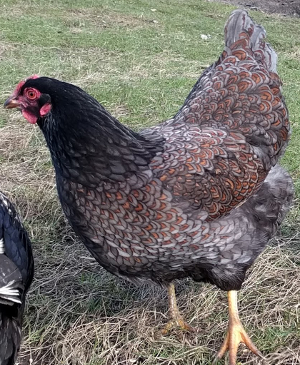
One of my favourites but difficult to produce well.
Double-laced Blue (Bantam)
Originally bred in the Netherlands. Bred again in Germany from a Bantam double-laced Barnevelder cockerel and a Bantam blue-laced Wyandotte hen; recognised in 1987.
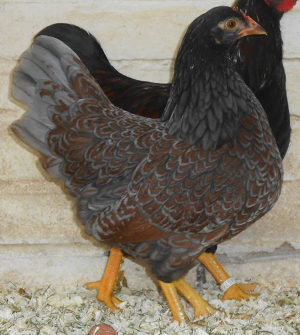
Blue Splash (large fowl)
Recognized in Germany in 1997. Bred from Black Barnevelder and Blue Niederrheiner. Not recognised in the Netherlands.
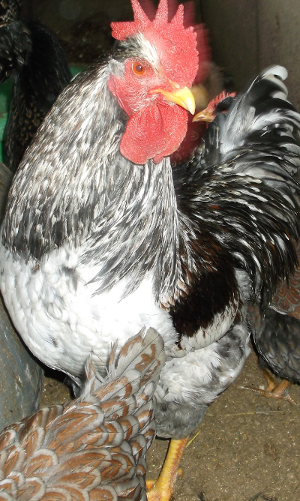
Also called splash Barnevelder.
Silver (large fowl)
Appears to be a recognised variety in the British & Australian Poultry Standards. Single-laced.
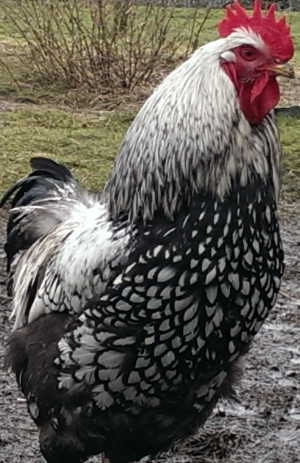
They do exist although I have never found them popular. I have kept a trio purely for nostalgic reasons and I have never seen any others.
Silver-black double-laced (Bantam)
Developed in the first years of the new millennium by Dutch breeder Bert Beugelsdijk from crosses of double-laced Barnevelder bantams and Silver-pencilled Wyandotte bantams. Recognised in 2009.
With black pattern over a white ground colour was standardised in 1938 but good quality specimens are very rarely seen, there is a problem with red leakage in most hobby produced birds and errors in the markings stick out like a sore thumb.
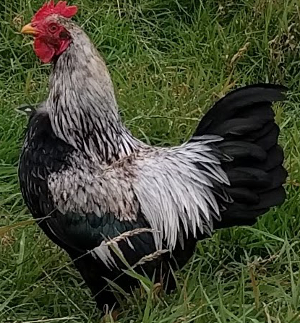
I am particularly proud of my bantam barnevelders, I bred them myself from a standard double laced and bantam Wyandottes.
Silver-black double-laced (large fowl)
Developed by the Dutch breeders Gerrit Simmelink and Cor Tensen from crosses of a large Silver-pencilled Wyandotte rooster and large double-laced Barnevelder hens. Recognised in 2013. Also recognised in New Zealand Poultry Standards 2013.
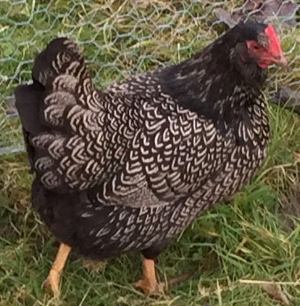
Good examples are very rare and stunning. More on the Silver laced Barnevelder.
Silver Blue Barnevelder
Cross of the Silver and blue double laced. Sometimes also called the double silver double blue.
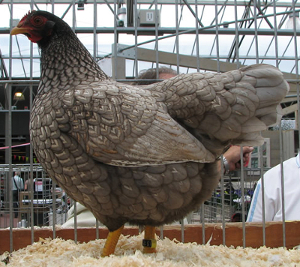
One of my current projects.
Black (large fowl)
1920s. Black came as a sport from the partridge. Black Plymouth Rock and Black Wyandottes were crossed in to achieve pure black. They have always had a tendency to be dark and a few people had the idea to select the darker birds and selectively breed a black variety, as they were too dark for show and normal breeding programmes.
A separate club for the blacks was founded in 1925 in the United Kingdom and the new type was accepted by the poultry club in 1928. There was always a little brown until they were crossed with pure black breeds lie the black Plymouth or Wyandotte.
Although when using the Wyandotte several years would be required to dispose of the rose comb. The ubiquitous problem in Barnevelders that have been crossed to produce types is they are unlikely to produce brown eggs, an ability, once lost are very difficult to restore.The clubs eventually merged into 1.

Black (Bantam)
Recognised in 1954 in Germany. Bred from Black Barnevelders and Bantam Black Wyandottes in Germany.
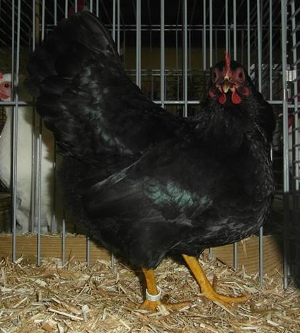
White (large fowl)
1934. Occasionally occurring recessive white birds were crossed with white Plymouth Rocks and White Leghorn to produce White Barnevelders.
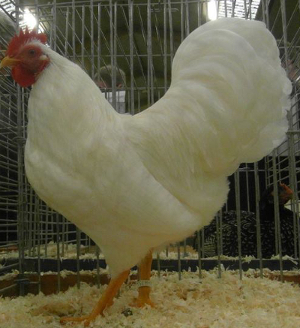
White (Bantam)
Recognised in 1960 in Germany. Bred from Black Barnevelders and Bantam White Wyandottes in Germany.
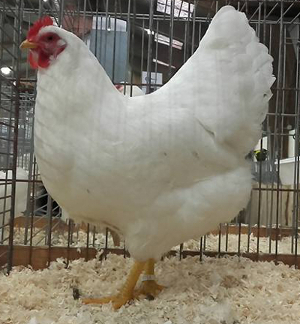
Auto-sexing barred (large fowl)
This is the only reference and image I can find of the auto sexing barred Barnevelder.

The auto-sexing Barnevelder was produced by adding the barring gene to a good strain by a repeated system of back crossing. The males are homozygous for the gene and are hatched whitish and grow up light barred.
The females being haplozygous are hatched brown striped and grow up greyish brown. The sexes can be readily identified at birth.
Auto-sexing barred (Bantam)
Recognised in Germany in 1988. Bred in Germany with the aid of auto-sexing Bantam Bielefelder. Bantam Niederrheiner and Bantam Italiener (German-type Leghorn) were also crossed in.
All of the autosexing Barnevelders are now extremely rare but can be found on the continent.
Dark brown (large fowl)
Recognised in 1982 in Germany. Bred from Black Barnevelders, Rhode Island Reds and New Hampshires in Germany.
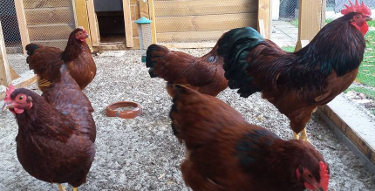
Dark brown (Bantam)
Recognised in 1987 in Germany. Bred from Bantam Black Barnevelders, Bantam Rhode Island Reds and Bantam New Hampshires in Germany.
Partridge (large fowl)
Partridge Barnevelders were still kept in Britain in the 1990s, possibly still derived from early imports. Available in silver and gold.
Chamois(Large fowl & Bantam)
Double laced feather pattern of gold-mahogany and white, recognised in New Zealand Poultry Standards 2013.
Isabel
Isabel is the term for Lavender diluting the gold in patterned colours like lacing and partridge .

Known by a few names, sometimes Isabella and Lavender the type is not recognised in any standards I know of and is very rare.
